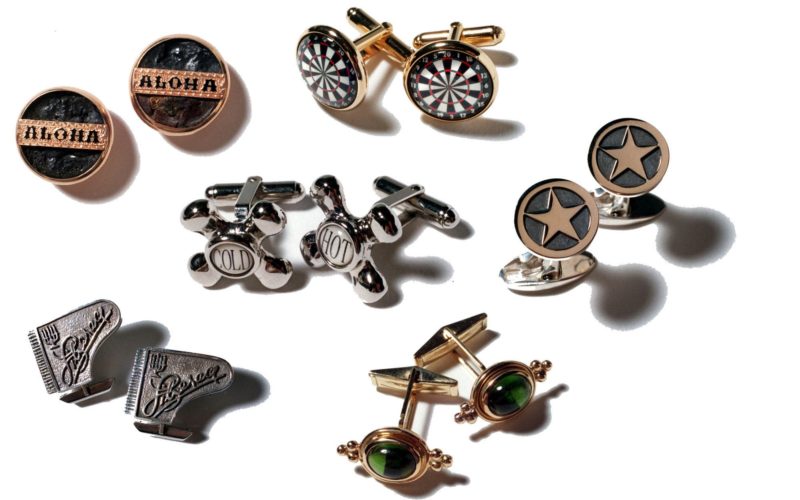Q. I know it isn’t an actual style but would it be entirely wrong to have the cuffs on my regular shirts tailored to put a hole where the button is and use cufflinks? I have many links and fewer French-cuffed shirts, some of which I don’t love. I would like to wear the links with my other shirts.
A. No, it would not be wrong, and, yes, you certainly can have your conventional button-cuffed shirts (known as barrel cuffs) changed into French cuffs. It makes sense to alter a few shirts to accommodate a nice collection of cufflinks. But, unfortunately, most tailors are not equipped to perform this very specific type of alteration.
To explain further, French cuffs are shirt cuffs with two buttonholes and no buttons; they are designed to be worn with cufflinks. Many men like them because they are a step more formal and dressy than barrel cuffs and also because the cufflinks they are worn with add a note of individuality and personality to a man’s combination. (Women are fond of them for these same reasons, plus one more: they make an easy gift choice, since they do not require knowing a man’s exact size.)
At current prices for fine shirts, and especially custom shirts, it is wise to have favorite shirts that you already own brought back to life and/or customized to fit your preferences. There actually is a significant range of alterations that can be made to shirt cuffs: they can be changed from barrel cuffs into single French cuffs (or the reverse), or made into convertible barrel/French cuffs; and frayed cuffs can be turned. If cuffs and, for that matter, collars are beyond repair, these can be replaced; usually this is done with new white shirting fabric (the resulting white-contrast cuff or white-contrast collar and cuff shirts on a colored or striped body are not as popular as they once were, but have always been liked by natty dressers). Many men have favorite shirts that they desperately want to hang onto, when they are somewhat tattered or the men have lost weight, or when their size is not available but a larger size is. Other shirt tailoring options include shortening sleeves, cutting down oversize collars, replacing worn cuffs, or even adding a monogram (for those who feel others need to know their initials).
The shop I recommend in New York City, that has been performing all manner of shirt alterations and repairs for decades is L. Allmeier at 39 West 32nd Street, New York, NY 10001 (212-243-7390). Their prices are not inexpensive, but the work is thoroughly professional, varying from $20 for changing a button cuff into a French cuff or for turning a frayed cuff, up to $50 for a new white collar.
While discussing buttonholes, I might mention another alteration that some highly knowledgeable dressers are fond of: they have the non-functioning stitched “buttonholes” on the sleeves of their off-the-rack suits and sport coats changed into “functioning buttonholes.” This is a subtle change that many fine tailors can perform. Normally, only high-end and custom-made jackets come with working buttonholes on the sleeves, but a skilled tailor can create them provided the sleeves have enough fabric for an open placket (vent). This totally unnecessary feature goes back historically to the days when a man kept his jacket on at all times and might, on occasion, want to roll back his sleeves a turn. Unbuttoning the functioning buttonholes made that possible.
Today, if a man wants to show off that his jacket has this upscale feature, he leaves the button nearest to his wrist unbuttoned. While it no longer serves any real function, a jacket with this special touch does serve to announce that the wearer knows a thing or two about elegant dressing. Even though adding it to one’s jacket is an affectation of sorts – one that conservative dressers may consider pretentious – the style does have its fans. The charge ranges from $75 at Allmeier’s to $100 at Paul Stuart; some shops charge as much as $200. Just as with monogramming, it adds a note of difference and specialness that announces to other sartorial insiders that you are a guy who “knows” how to dress. And, it certainly is a lot less costly way to make this point than wearing a $100,000 watch.









